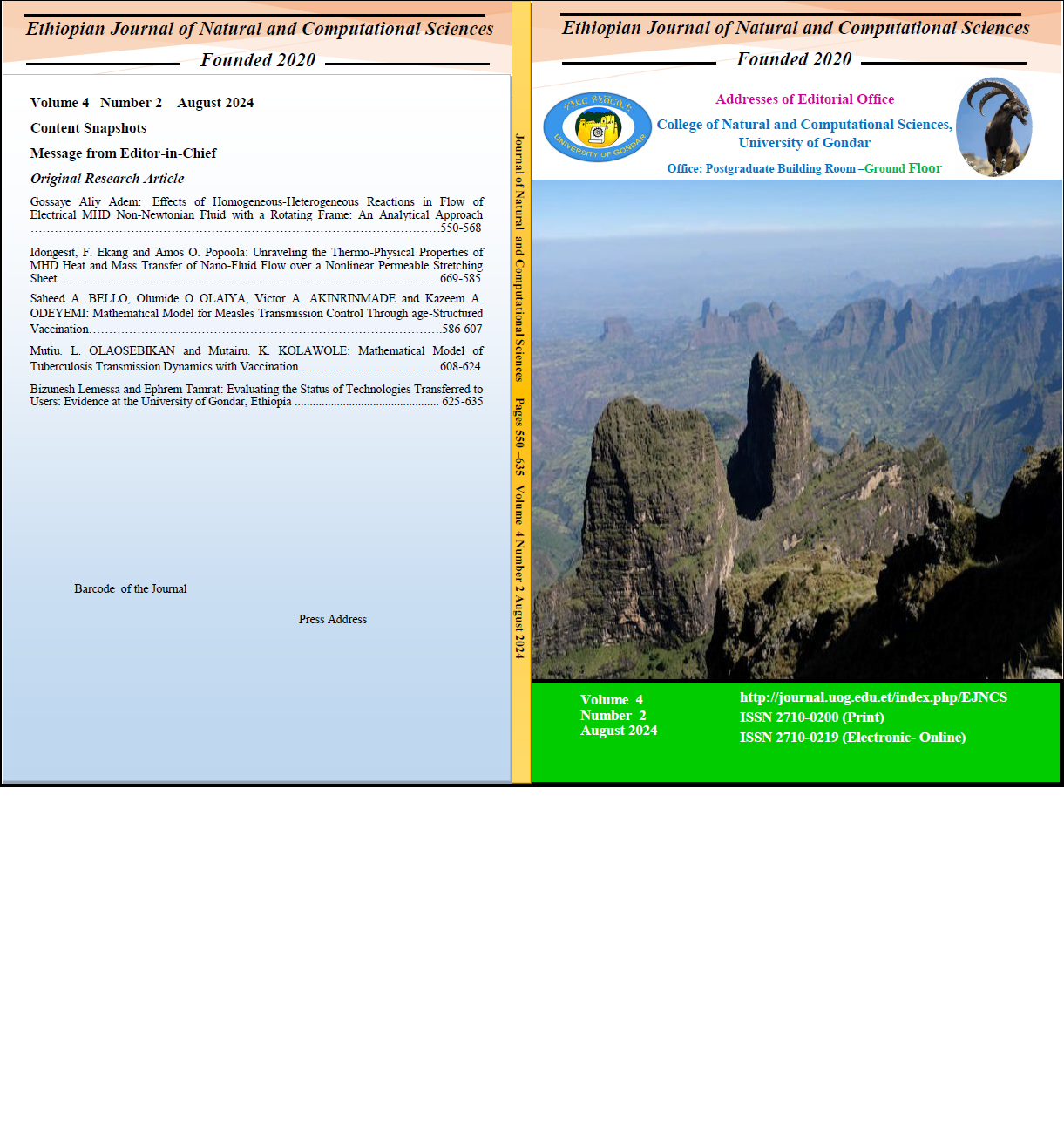Mathematical Model of Tuberculosis Transmission Dynamics with Vaccination
An Analytical Approach
Keywords:
Tuberculosis Model, Basic Reproduction Number, Stability Analysis, VaccinationAbstract
Tuberculosis (TB) is caused by bacteria. It can spread via close contact with people who have active TB. To gain a better understanding of the disease spread and control, we develop a deterministic model for this purpose. The corresponding threshold quantity was discovered by looking at the qualitative behaviors of the model as it was presented. When the effective reproduction number is less than unity, the system's tuberculosis-free equilibrium is considered to be locally asymptotically stable; otherwise, it is unstable. Additionally, we looked at the model's stability analysis and sensitivity analysis. The theoretical findings were demonstrated and supported by a numerical simulation. The overall finding indicates that decreasing the contact rate with the susceptible person and increasing the rate of immunizing susceptible persons with highly efficient vaccines will lower the prevalence of tuberculosis in the population.

